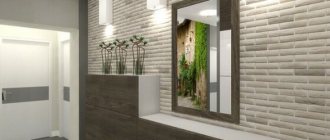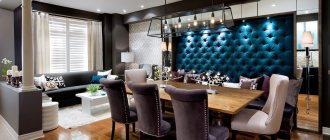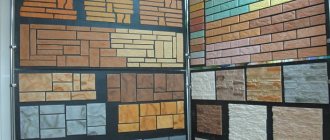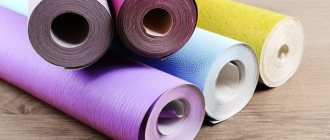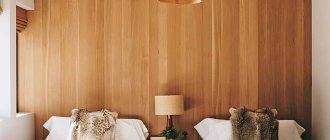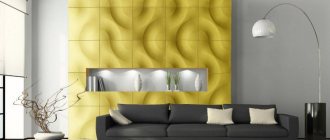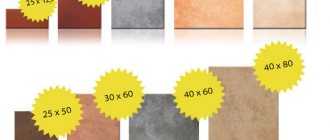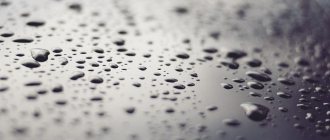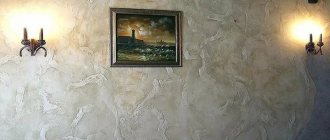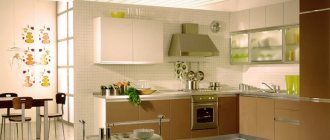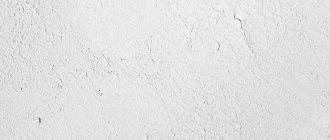Proper finishing of premises
An alternative to plastering is gypsum boards or particle boards.
Such materials are mounted directly on the surface or on a previously constructed frame. The latter option allows you to obtain additional space, which can be used for laying thermal insulation and communications. Without proper preparation, it is impossible to achieve high-quality results when decorating premises.
- Cleaning work. These are procedures that serve to obtain high-quality decorative coating. For this stage, the existing requirements are least stringent if the work is carried out independently.
Conditions for choosing materials
Most customers want to create a pleasant working environment in their office, in which the finishing done should not be too intrusive or oppressive. The interior of the premises should help create a friendly working atmosphere in which it is pleasant and easy to work. This is the only way that company employees will be able to perform their duties with maximum efficiency.
Therefore, only high-quality, durable and at the same time simple materials are used for office decoration. In this case, the office premises will always be clean, practical and will not require new renovations for a long time. In addition, we should not forget about the rather high prices for repairs and decoration of offices in Moscow. The choice of materials used should correspond to the financial capabilities of your company.
SNP requirements for finishing residential premises
Among the documents entirely devoted to the regulation of redevelopment in Moscow, one can name Moscow Government Resolution No. 508, as amended by No. 840-PP. It establishes framework rules for registration, registration, design and delivery of finished redevelopments. At the same time, one of its requirements is (clause 11.9. Appendix 1) a ban on “violation of the requirements of construction, sanitary and hygienic, operational standards and fire safety rules for apartment buildings.”
6.4.3. If the source of EMR is household appliances located (or intended) for use inside residential premises, the assessment of its impact on humans is carried out in accordance with the requirements of current sanitary standards for acceptable levels of physical factors when using consumer goods in domestic conditions. In this case, the measurement of potentially harmful factors should be carried out in the area where people are as close as possible to household appliances in accordance with the instructions for their use. If such information is not available, then when taking measurements you must be guided by the following:
Description of solutions for finishing the premises of the main
Features of the internal space of industrial buildings are determined, first of all, by the type of building and its main construction space-planning parameters, type of structures and construction materials of the frame and fences.
The color decoration of the interior is designed on the basis of SN 181-70, taking into account the physiological effects of color and helps to improve hygienic working conditions in industrial premises, reduce fatigue, increase labor productivity, ensure the safety of production processes, and also helps to improve the lighting of premises and increase the aesthetic level of an industrial enterprise.
In industrial premises without natural light, with fluorescent lighting (except for premises illuminated by color-corrected lamps), color schemes are adopted in which warm tones predominate.
The surfaces of building structures are painted with a matte and semi-matte texture. The limits for the use of individual colors are adopted in accordance with the main divisions of the structures.
The number of colors in the color scheme of equipment (machines, machines, units, etc.) does not exceed three (not counting signal and distinctive ones). For large equipment, light colors with a reflectance of at least 50% are used.
Signal and warning painting of elements of building structures that pose a risk of accidents, hazardous elements of production equipment and intra-shop transport, fire extinguishing and safety devices and means, as well as the color scheme of production safety signs is carried out in accordance with the requirements of GOST R 12.4.026-2001 “Signal colors, safety signs and signal markings.”
Signal colors, safety signs and signal markings are adopted to attract the attention of people at industrial, public facilities and other places to danger, a dangerous situation, to warn in order to avoid danger, to communicate a possible outcome in case of neglect of the danger, instructions or requirements certain actions, as well as to communicate the necessary information.
Painting of components and elements of equipment, machines, mechanisms, etc. paints and varnishes of signal colors and the application of signal markings on them is carried out by the manufacturer. If necessary, additional painting and application of signal markings to equipment, machines, mechanisms, etc., in operation, is carried out by the organization operating this equipment, machines, mechanisms.
Locations (installations) and sizes of safety signs on equipment, machines, mechanisms, etc. are established in the design documentation.
The placement (installation) of safety signs on equipment, machines, and mechanisms is carried out by the manufacturer. If necessary, additional placement (installation) of safety signs on equipment, machines, mechanisms in operation is carried out by the organization operating them.
Fire safety signs placed on the evacuation route, as well as evacuation safety signs and safety sign EC 01 (Table I.2 according to GOST R 12.4.026-2001) are made with external or internal lighting (backlight) from an emergency power supply or using photoluminescent materials.
Signs with external or internal electric lighting for fire-hazardous and explosion-hazardous premises are made in fireproof and explosion-proof design, respectively, and for explosion-hazardous premises - in explosion-proof design.
Safety signs intended for placement in industrial environments containing aggressive chemical environments can withstand exposure to gaseous, vaporous and aerosol chemical media.
Safety signs are placed within the line of sight of the people for whom they are intended.
Signs to indicate emergency exits from corridors and other places without lighting are made three-dimensional with internal electric lighting from autonomous power supply and from an alternating current network.
Identification painting of pipelines in industrial premises is carried out in accordance with the requirements of GOST 14202-69 “Pipelines of industrial enterprises. Identification markings, warning signs and markings.”
Since the light reflected by the internal surfaces of the premises increases the illumination of the workplace, light colors with high reflectivity were used to paint the walls and ceiling. In the interior of premises for permanent residence of people, a calm coloring, devoid of sharp contrasts, is used in the mid-wave zone of the spectrum with a small amount of color - light, low- and medium-saturated.
To create a normal psychological state of a person (formation of a certain state of health, mood, calmness), a connection between the internal space and the environment is organized. The visual connection between the interior and the external space is carried out through a direct view of the environment through the glazed planes. The spatial connection of the interior with the environment is carried out through the organization of the main entrance nodes and a number of secondary entrances and exits. Addressing these issues has a major impact on health, productivity and quality of work.
The extended working day of workers in rotational camps necessitates the rapid restoration of their physical and spiritual strength, and therefore an increased level of comfort, and the introduction of means of compensating for communication with wildlife.
To finish the floors, walls and ceilings of the service building, the rotational housing building, the control room, and the household part of the industrial building, materials approved by the State Sanitary and Epidemiological Supervision authorities were used.
Internal partitions are made of plasterboard sheets of the GKL, GKLO and GKLV brands on a metal frame and monolithic concrete. Plasterboard sheets are rubbed down, puttied and painted, or tiled. In the building of the main pumping station, the partitions separating the pumping room, the circulating water supply pumping station, the electrical panel and the ventilation chamber are made of cellular concrete.
Partitions and floors in wet process rooms are designed to be water- and vapor-tight. The floors, walls and equipment of dressing rooms, washrooms, showers, and restrooms are covered with moisture-resistant materials with smooth surfaces that are easy to clean with hot water using detergents and disinfectants.
Interior decoration, equipment, equipment requirements, design temperature of premises are laid down in accordance with SNiP 2.09.04-87* “Administrative and domestic buildings” and SP 2.2.1.1312-03 “Hygienic requirements for the design of newly built and reconstructed industrial enterprises”, SanPiN 42- 121-4719-88 “Designs, equipment and maintenance of dormitories for workers, students, students of secondary specialized educational institutions and vocational schools”, manual to SNiP 06/31/2009 “Public buildings and structures”, SanPiN 2.3.6.1079‑01 “Sanitary and epidemiological requirements for public catering organizations, production, circulation of food products and food raw materials in them.”
The fire hazard class of decorative, finishing and facing materials for walls, ceilings and floor coverings on escape routes complies with the requirements of the Federal Law “Technical Regulations on Fire Safety Requirements”, Table 28 and Table 29.
For buildings of functional fire hazard classes F 1.2, F 3.2, F 3.6, F 4.3, F 5.1, F 5.2, the fire hazard class of materials for finishing walls and ceilings is adopted:
for lobbies, staircases - KM2;
for common corridors, halls - KM3.
For buildings of functional fire hazard classes F 3.4, the fire hazard class of materials for finishing walls and ceilings is adopted:
for lobbies, staircases - KM0;
for common corridors, halls - KM1.
For buildings of functional fire hazard classes F 1.2, F 3.2, F 3.6, F 4.3, F 5.1, F 5.2, the fire hazard class of floor covering materials is adopted:
for lobbies, staircases - KM3;
for common corridors, halls - KM4.
For buildings of functional fire hazard classes F 3.4, the fire hazard class of floor covering materials is adopted:
for lobbies, staircases - KM1;
for common corridors, halls - KM2.
For a building with functional fire hazard class F 3.2, for a dining room, the fire hazard class for materials for finishing walls and ceilings is KM3, and for flooring – KM4.
In residential premises, materials are used for finishing walls, ceilings, filling suspended ceilings with a fire hazard no higher than class KM4 and floor covering materials with a fire hazard no higher than class KM4.
Linoleum on a heat and sound insulating basis was used as floor covering in office premises, dressing rooms, heating and eating rooms, and medical center premises. For the dining room, showers, bathrooms, clothes drying room, ceramic tile flooring was used. Anti-slip Porcelain Granite tiles were used for corridors, lobbies, vestibules, and staircase landings.
The choice of floor covering type for industrial buildings determines the operating mode. There is a raised floor for the control room and crossover rooms. In the premises of the communication center and instrumentation warehouse there is antistatic linoleum. For the premises of the pumping room (main pumping room), ventilation chambers, electrical panels, fireproof, dust-free, spark-free floors were chosen - mosaic-concrete (terrazzo) polished with lime filler. Mosaic (terrazzo) polished, dust-free tiles are used to cover the floors in closed switchgear switchgears, package transformer substations and control rooms. In the fire extinguishing pumping station, pumping stations of the first and second lifts there are ceramic, matte, anti-slip tiles. In the production building, in workshops and warehouses, the floors are mosaic-concrete (terrazzo), in domestic premises there is linoleum in the dressing rooms.
Suspended ceilings are slatted and “Armstrong” type with a metal frame.
Window blocks for the service and amenity building, rotational residential building and utility premises of the production building, control room, recycling water supply pumping station, fire extinguishing pumping station are made of frost-resistant PVC profiles with tilt-and-turn fittings and double-glazed windows. The opening sashes of the windows are equipped with mosquito nets.
For the buildings of the main pumping station and the unit with safety devices, window blocks are used with metal frames.
External doors are frost-resistant, with seals and self-closing closers.
The dimensions of external and internal doors are designed in accordance with the instructions and requirements of SP1.13130.2009 “Fire protection systems. Escape routes and exits”, SP 2.13130.2009 “Fire protection systems. Ensuring the fire resistance of protected objects” and SNiP 2.09.04-87* “Administrative and domestic buildings”.
All door blocks have locks that can be opened from the inside without a key.
The doors of ventilation chambers, electrical control rooms, and other fire-hazardous rooms are made fireproof, with seals in the vestibules and equipped with closers.
Industrial buildings are equipped with insulated steel gates with wickets.
Medical premises are subject to additional sanitary and hygienic requirements. Premises in medical institutions require constant and thorough, depending on the purpose of the room, wet or wet cleaning and disinfection, therefore the interior decoration of the premises should facilitate quick and high-quality sanitary maintenance of all functional areas. This explains the increased attention to finishing materials that meet the latest ideas about hygiene.
Interior finishing is carried out only with certified materials approved for use in medical institutions.
In the medical office, wall panels are used to decorate the walls. Linoleum was used as flooring in the office.
For the first-aid post, the requirements of PPBO 07-91 “Fire Safety Rules for Healthcare Institutions” are met.
Interior decoration
Naturally, this is only a small part of all the documents that are used when designing the interior decoration of houses and apartments. For almost every operation there is a separate GOST, SNiP or instructions that will help you understand the nuances of the work.
Primary requirements
Materials (paints, enamels, tiles, cladding) used for finishing work must be certified. Their safety, in accordance with the requirements of such products, must be confirmed by a document.
Walls, ceilings and floors must meet the following criteria:
- Surface smoothness.
- Ease of wet cleaning.
- Resistant to treatment with disinfectants.
Floor coverings should be:
- smooth;
- allowing for wet cleaning and disinfection.
- The requirements apply to linoleum, tiles, wooden floors (parquets, painted planks, etc.).
Please note that adjustments are constantly being made to the regulatory framework - new rules. Therefore, our specialists are guided by documents that are advisory in nature. This is also important, because deviations from the norms can lead to troubles that will lead to significant financial expenses.
If you want to do high-quality interior decoration of your building in Moscow , we are at your service. Call the phone number listed on the website. The manager is always ready to advise you and accept your order.
Snip Requirements for the Finishing of Residential Premises
6.4.1.6. Measurements of the radiation level should be carried out under the condition that the EMR source is operating at full power at points in the room closest to the source (on balconies, loggias, near windows), as well as at metal products located in the premises, which can be passive EMR repeaters and at full disconnected household appliances that are sources of RF EMR. The minimum distance to metal objects is determined by the operating instructions for the measuring instrument.
6.4.3.3. Variable electric and magnetic fields are assessed using root mean square values; electrostatic fields - according to the maximum value. The measured values are compared with the permissible value, to which the measurement error is added in accordance with the operating instructions for the measuring instrument.
Sanitary standards and requirements for residential premises
- The electrostatic field voltage when measuring the finished surface cannot exceed 15 kV/m at a humidity of 30-60%;
- The effective measured activity of all radionuclides of any building mixtures should not exceed 370 Bq/kg when used during construction work and reconstruction of housing stock;
- Temperature is also a very important aspect. The coefficient for calculated thermal activity cannot be more than 10 kkakV.m.hour.deg.
Sanitary and hygienic requirements and standards provide for the concentration of chemicals in the air of residential buildings during the period when they are put into operation. These standards are checked by relevant specialists, entering the obtained data into the act. Without this document, permission to put the building into operation is not issued until the mark drops to an acceptable value.
We recommend reading: Sample of filling out Tax Return 3 Personal Income Tax for 2021 for an Apartment
IV. Hygienic requirements for heating, ventilation, microclimate and indoor air environment
4.1. Heating and ventilation systems must ensure acceptable microclimate and indoor air conditions. The optimal and permissible microclimate parameters in residential buildings are given in these sanitary rules.
(as amended by Amendments and Additions, approved by Resolution of the Chief State Sanitary Doctor of the Russian Federation dated December 27, 2010 N 175)
4.2. Heating systems must ensure uniform heating of the air in the premises throughout the entire heating period, do not create odors, do not pollute the indoor air with harmful substances released during operation, do not create additional noise, and must be accessible for routine repairs and maintenance.
4.3. Excluded. — Changes and additions, approved. Resolution of the Chief State Sanitary Doctor of the Russian Federation dated December 27, 2010 N 175.
4.4. Heating devices should be easily accessible for cleaning. For water heating, the surface temperature of heating devices should not exceed 90 °C. For devices with a heating surface temperature of more than 75 °C, protective guards must be provided.
4.5. The premises of the first floors of residential buildings located in climatic region I must have heating systems for uniform heating of the floor surface.
4.6. The installation of autonomous boiler houses for heat supply to residential buildings is permitted subject to compliance with the quality of atmospheric air in populated areas, hygienic standards for noise and vibration.
4.7. Natural ventilation of residential premises should be carried out by air flow through vents, transoms, or through special openings in window sashes and ventilation ducts. Duct exhaust openings should be provided in kitchens, bathrooms, toilets and drying cabinets.
The design of the ventilation system must prevent the flow of air from one apartment to another.
It is not allowed to combine the ventilation ducts of kitchens and sanitary facilities with living rooms.
4.8. Ventilation of objects located in residential buildings must be autonomous. It is allowed to connect the exhaust ventilation of public premises that do not have harmful emissions to the general exhaust system of a residential building.
4.9. Exhaust ventilation shafts must protrude above the ridge of the roof or flat roof to a height of at least 1 m.
4.10. The concentration of chemicals in the air of residential premises when buildings are put into operation should not exceed the average daily maximum permissible concentrations (hereinafter -) of pollutants established for the atmospheric air of populated areas, and in the absence of average daily MPCs, not exceed the maximum one-time MPCs or estimated safe exposure levels (hereinafter — ).
back to contents
Housing law
According to Art. 15 of the Housing Code of the Russian Federation, a residential premises is recognized as an isolated premises, which is real estate and is suitable for permanent residence of citizens (meets established sanitary and technical rules and regulations, other legal requirements (hereinafter referred to as requirements).
The above characteristics were developed in the Decree of the Government of the Russian Federation of January 28, 2006 No. 47 “On approval of the Regulations on recognizing premises as residential premises, residential premises unsuitable for habitation and an apartment building as unsafe and subject to demolition or reconstruction” (as amended on 02.08. 2007 No. 494) (hereinafter referred to as the Regulations).
Apartment renovation according to the norms and standards of SNiP and GOST
All renovation work in the apartment is a complex of technically complex works on finishing the premises, installing engineering systems, plumbing and electrical equipment. Regardless of the complexity of the work - be it a comprehensive turnkey renovation or partial restoration of the operational properties of the premises - all this is subject to technical norms and standards, if such activities affect the safety of buildings and structures, then this is mandatory! There are also exceptions to the rules when standards and regulations are based on the voluntary application by parties of sets of building rules or standards in repair and construction work.
technical regulations are applied on a mandatory basis , in construction - this is the Law of the Russian Federation No. 384-FZ of December 30, 2009 “Technical Regulations on the Safety of Buildings and Structures” . Codes of practice and standards are applied voluntarily, except as required by law. Thus, on a mandatory basis, in addition to the technical regulations, the sets of rules and standards specified in the List approved by Decree of the Government of the Russian Federation No. 1047-r dated June 21, 2010 are also applied. In connection with the work to update the sets of rules, the specified List is subject to change. In addition, Rostekhregulirovanie publishes a List of sets of rules and standards, as a result of which, on a voluntary basis , compliance with technical regulations on the safety of buildings and structures is ensured (the list was approved by order of Rostechregulirovanie dated 06/01/2010 No. 2079; current edition dated 05/18/2011) .
What regulatory documentation regulates finishing
When carrying out interior renovations on their own, each consumer tries to complete it at the highest level, for himself. But a large number of property owners hire professionals to carry out finishing work. And since you have to pay for the work, it is necessary to know the basic requirements for this kind of work. All requirements for the finishing of premises are specified in special regulatory documents called SNiP. SNiP stands for sanitary norms and rules. The quality of the finishing work performed must comply with the given standards and not fall below.
Basic regulatory documentation For the same reading and understanding of quality standards, regulatory documents have been developed that prescribe requirements for all types and types of finishing work.
Compliance with the requirements of these documents is mandatory:
- if you want to build structures or buildings;
- if you are going to reconstruct existing premises or remodel some part of them;
- if you want to restore your property.
The rules and regulations under consideration focus on ensuring safety.
The interior design of the premises is carried out in accordance with SNiP 3.04.01-87. The construction and installation of sanitary networks is carried out in accordance with SNiP 3.05.01-85. Electricity supply and electrical grid system are regulated by SNiP 3.05.06-86.
Video:
Law of the Russian Federation No. 384-F3 of December 13, 2005 “Technical Regulations on the Safety of Buildings and Structures” is the main regulatory act that is mandatory for all construction organizations. For individual customers, the standard level for the provision of repair services is regulated by GOST R 52059-2003.
If you hire a construction organization to carry out repair work, be sure to draw up an Agreement, which should contain a clause indicating the requirements for the work performed to comply with building codes.
The quality of the final finishing work must comply with the requirements of SNiP 3.04.01-87. Since this is a fairly thick document, we offer instructions containing the main deviations of all surfaces of the interior. All deviations are determined by the tolerance value and are specified as a percentage or a geometric value (m, cm, mm).
Gender and tolerances
- thickness no more than 10% of the design;
- unevenness of the surface of the screed for decorative coatings is no more than 2 mm over a length of 2 m;
- flatness when laying parquet boards is no more than 2 mm per 2 m of length;
- the width of the seam when laying ceramic tiles is no more than 6 mm;
- surface flatness when laying ceramic tiles is no more than 1 mm.
Besides:
- Chips, potholes, protrusions and depressions, cracks during visual inspection are not allowed;
- the flatness of the surface is checked with a 2 m long strip, while the permissible clearance along the entire length should not exceed 4 mm;
- No voids are allowed under the tiles when tapping them. The tiles will need to be repositioned.
Walls and deviation tolerances
- when plastering the surface, deviations from flatness should not exceed 2 mm over a length of 1 m, and in tall buildings by 1 cm;
- finishing work is carried out only on surfaces with humidity less than 8%;
- painting work is carried out on a surface with no more than 8% humidity;
- the paint coating is applied to a thickness of at least 25 microns;
- smudges, splashes, stains, and shade changes are not allowed on the painted surface;
- wallpapering should only be done at a humidity level of no more than 8%;
- The seam width between wallpaper strips is not allowed to be more than 0.5 mm;
- there should be no bubbles, stains, or peeling of the wallpaper on the surface;
- Wallpapering electrical switching devices, baseboards, and doorways is not allowed;
- The wallpaper pattern must necessarily match along the entire length.
Where to start decorating the premises? Before you start decorating the room, decide on the end goal of what you want to achieve. It will not be possible to create a comfortable, convenient, stylish room without the involvement of specialists. Moreover, you cannot do without a specialist if you are planning to carry out internal redevelopment of the premises.
List of basic repair work for interior finishing The basis consists of work on leveling the surface, performing putty and plastering work, floor screeding, and covering the surface with plasterboard sheets. Additionally, facing work, installation of doors, slopes and windows are carried out. Interior finishing includes electrical installation work, installation of insulation, and flooring. The quality of the finishing work determines the final assessment of the room. You can only get a beautiful room using high-quality finishing materials.
The interior decoration of the room is divided into three stages:
- 1. work with the ceiling;
- 2. wall decoration;
- 3. finishing work on the floor.
Attention! It is in this sequence that interior finishing work is carried out.
The ceiling and finishing work on it Getting inside the room, any person involuntarily turns his gaze to the ceiling. And the requirements for the ceiling surface are the highest. You can get a high-quality ceiling covering by using stretch ceilings. High quality ceiling coverings are obtained using plasterboard structures.
Walls and finishing work on them A large number of technologies and a variety of finishing materials are used to decorate walls. Liquid, metal and moisture-resistant wallpaper have been added to the traditional wallpapering of the room with paper roll wallpaper. There are also fabrics and natural stone. Each type of wallpaper has both its advantages and disadvantages. Rolled paper wallpaper has the lowest price. Liquid wallpaper has no seams and does not need to be aligned with the pattern. Metal wallpaper not only has a wonderful appearance, but also durability and practicality.
Floor and finishing work on it It is preferable to cover floors with high frequency of use with ceramic tiles. When the frequency of operation of the coating is low, it is allowed to use carpet, laminate, linoleum or parquet boards.
Tips for removing old coating The whitewashed ceiling must be washed off, and the paint must be removed from the painted ceiling. Wash off with a sponge and a warm washing solution. Remove paint using a spatula, abrasive, or chemically, using FAIL-5 remover. Old paper wallpaper is removed with a spatula after moistening; washable wallpaper is removed after treatment with a steamer or by ironing it with a hot iron through a damp cloth. Do the same with the wall covering. The covering is removed from the floor when it completely fails, or in case of complete replacement.
Decorating a room with wood Lining is especially popular for interior decoration. It is best used when decorating a child’s room, country house or living room. The main advantage of the material is its environmental friendliness. Among the advantages of the material, I would like to note the ease of installation and low cost of the material. And natural beauty cannot be reproduced in artificial materials.
To decorate a room with clapboard it is necessary to complete the preparatory stage:
- install electrical wiring, television and telephone wires;
- mark the installation locations of electrical switching fittings.
To fasten the lining, it is necessary to install a wooden sheathing made from bars of the same thickness. If necessary, voids in the sheathing are filled with insulation. It is best to use mineral wool as insulation. To improve vapor and waterproofing, polyethylene film should be laid.
The lining is mounted both vertically and horizontally. Diagonal installation of the coating is also allowed. The result is a beautiful surface, but the complexity of installation is beyond the reach of beginners.
When purchasing lining, carefully approach the selection process.
Lining installation technology
The lathing is attached to the wall in increments of 35...60 cm. When installed vertically, the lathing is installed horizontally. Installation of the lining begins from any corner with special nails with a small head or staples.
The installed carriage must be treated with an antiseptic liquid and fire-resistant composition. After complete drying, the surface is varnished.
Conclusion:
- When performing interior finishing work, be sure to follow the requirements of regulatory documents;
- when finishing, use only high-quality finishing materials;
- if you decide to redesign the interior space, you cannot do without specialists;
- Compliance with the requirements of regulatory documents will ensure the safe operation of the premises and its long service life.
I wish you success!
Which SNiP regulates the redevelopment of an apartment?
- transfer to a room located above the living space or kitchen is not allowed (with the exception of apartments that are located on the ground floor of the house, as well as those that have a two-level system);
- enlarging the bathroom and toilet is not allowed at the expense of the adjacent living space;
- the floor must be equipped with waterproofing;
- in relation to the floor level in adjacent rooms, in the bathroom it should be located 15 -20 mm lower, or the entrance to the room should be equipped with a threshold;
- the entrance to the bathroom cannot be from the living room or kitchen, with the exception of the bedroom if the apartment has another bathroom, the entrance to which is from the corridor;
- when the floors in the house are made of wood, the use of cement screeds is not allowed.
- when it comes to a two-level apartment;
- the fireplace is located in the living room of an old building, where solid fuel equipment is used for heating (Khrushchev);
- The design of a multi-storey building under construction includes an exhaust hood for fireplaces with live fire.
Advantages and technical characteristics of LSU sheets:
The base of the glass-magnesium sheet is formed by a reinforcing fiberglass mesh filled with a filler made from a mixture of perlite with fine wood shavings and magnesium compounds. The top of these composite panels is covered with acrylic of different textures and colors. The material is non-flammable and belongs to the “NG” group. SML Premium is produced in the form of wall panels measuring 1200x2440 mm and 6-12 mm thick. It has good sound insulation and bending strength. This makes it an ideal material for interior decoration in residential and public buildings.
Sanitary requirements for placement, layout and interior decoration
On the ground floors of residential buildings, it is not permitted to place youth cafes and restaurants where music is provided in the evening, as well as pancake shops, cheburek shops and other enterprises that prepare food that has a pungent odor. When located in residential buildings, unloading areas and a utility area should be located at the end of the building, where there are no windows or entrances for residents; it is not allowed to install hatches for receiving goods under apartment windows. It is recommended to place all noisy equipment (compressors, motors) in the basement or non-residential part of the building to prevent noise from penetrating into the apartments of residents. To prevent noise from penetrating into residential apartments, catering establishments must have sound insulation.
We recommend reading: Responsibilities and rights of the unemployed
Natural or artificial lighting of premises must meet regulatory requirements. Electric lamps in production and warehouse areas must have protective glass covers and mesh fittings to protect products from glass fragments. To maintain a certain temperature and humidity conditions, enterprises are provided with heating and supply and exhaust ventilation or an air conditioning system. Calculation of temperatures and air exchange rates is carried out according to SNiP. In the presence of large heat and steam emissions, local exhaust ventilation is equipped. Thermal curtains are installed in the entrance vestibules of large public catering establishments.
Resolution of the Chief State Sanitary Doctor of the Russian Federation dated August 2, 2010
6.4.1.3. When installing antennas of transmitting radio engineering facilities on residential buildings, the intensity of RF EMR directly on the roofs of residential buildings may exceed the permissible levels established for the population, provided that persons who are not professionally associated with exposure to RF EMR are not allowed to stay on roofs while transmitters are operating. On the roofs where transmitting antennas are installed, there must be appropriate markings indicating the boundary where people are prohibited from staying when transmitters are operating.
5.8. The normalized duration of continuous insolation for premises of residential buildings is established for certain calendar periods differentially depending on the type of apartments, the functional purpose of the premises, planning zones of the city and the geographical latitude of the area:
SNiPs and GOSTs for balconies and loggias - construction documentation
The basis of any balcony structure is a reinforced concrete slab onto which the remaining elements of the structural system of this building element are fixed. For this purpose, flat multi-hollow, flat solid and ribbed loggia slabs are used. GOST 25697-83 “Reinforced concrete slabs for balconies and loggias. General technical conditions" divides them into varieties of cantilever and beam type, differing in the method of location in relation to the supporting structure and the characteristics of the operation of the slab.
Having decided to re-equip or repair a balcony or loggia in your apartment, you should understand that any manipulations associated with the reconstruction and redevelopment of these premises must necessarily comply with regulatory requirements. The main document regulating this type of activity is SNiP. Balconies and loggias, in accordance with this set of rules, are designed and built taking into account to prevent their damage and destruction during operation.
Building codes and regulations SNiP, bathrooms
2. In accordance with SNiP 2.03.13-88 “Floors” , bathrooms, bathrooms, restrooms and other wet rooms after redevelopment are required to have waterproofing in the floor structure. Thus, when enlarging a bathroom or bathroom, you must dismantle the old floors in the expanded area and install new ones with waterproofing in their place. The installation of waterproofing is documented in a hidden work certificate, which is signed by a representative of the architectural supervision and the builder, or a representative of the DEZ, if you are doing the repairs yourself. It should be noted that changing the design of floors in accordance with Appendix No. 1 of Moscow Government Decree No. 508 requires a project completed by an organization that has an SRO approval certificate (designer’s certificate). The same appendix also talks about the requirements of the project when installing a new bathroom (bathtub, toilet). In other words, an expansion or installation during the redevelopment of a new wet area (bathroom, toilet, toilet, etc.) requires approval of the project.
One of the most common options for remodeling a bathroom and toilet is most often the redevelopment of separate bathrooms and toilets, that is, redevelopment by combining them into one room. Remodeling a bathroom and toilet can present some difficulties, since this type of redevelopment is usually considered individually and has many difficulties; in order to resolve these issues, it is necessary to correctly select the rules and regulations specifically for such premises, provided for by SNiPs and the norms of the Russian Federation.
